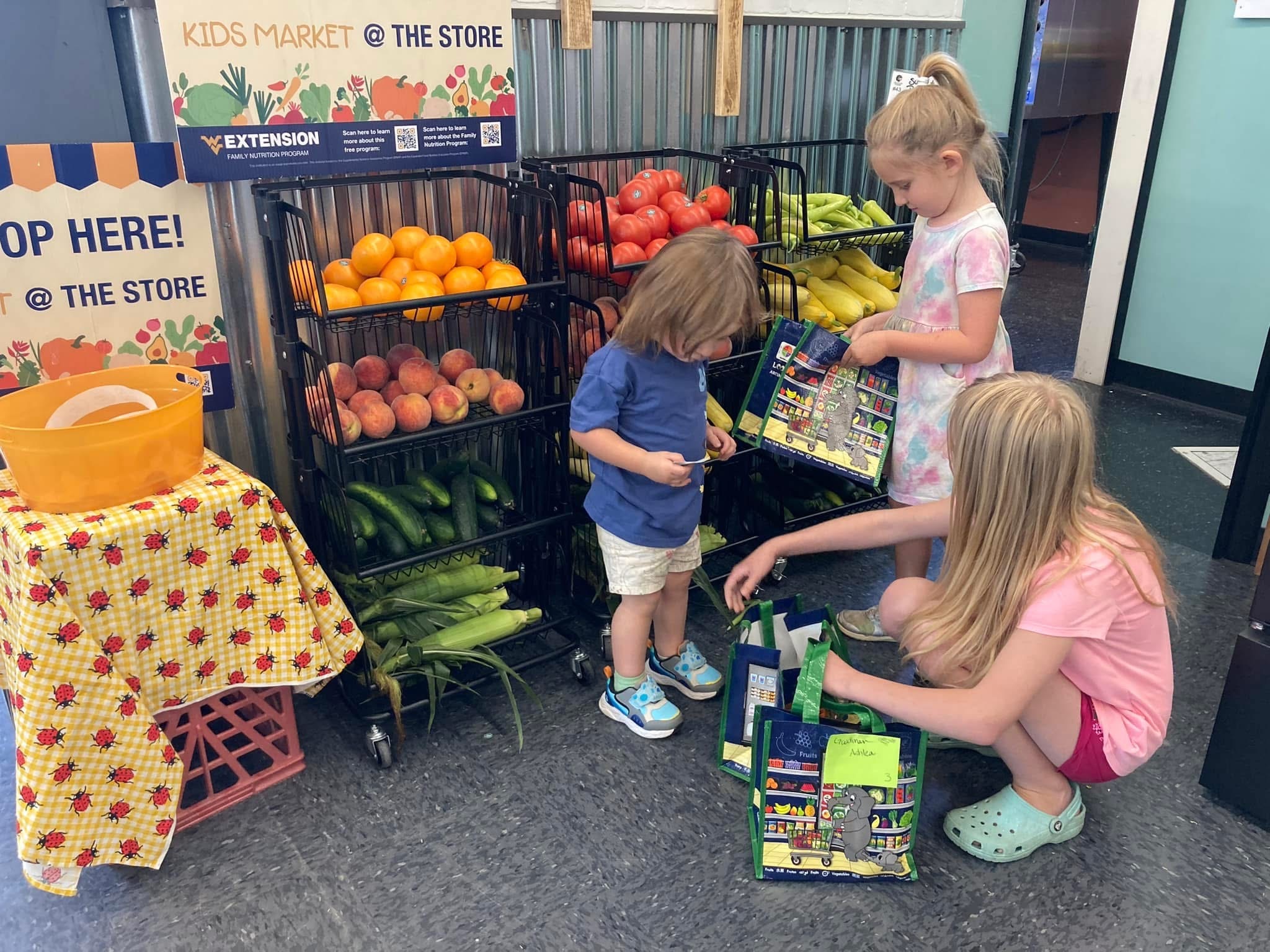Given free tokens through an Upshur County nutrition program, Julia Harvey looked like a grown-up digging for change in her handbag to pay for watermelons, potatoes and her favorite, cucumbers.
Her mom Lori Ulderich Harvey laughs remembering the way Julia, now 7, approached the fruit and vegetable stand. She looked like she had a budget to balance and mouths to feed at home.
“I said, ‘It’s yours,’” Ulderich Harvey said. “‘It’s whatever you want to get.’ It was freedom of choice for her, so that gave her some ownership of it.”
Until this year, Julia has been a regular at one of the federally funded kids markets at stores around the state. She decided whether to try sweet peppers or another food like lemons and learned how to turn those into healthy meals.
But this year, Julia won’t be able to shop there. The market she went to is closing, as are other initiatives to help families like hers find and eat more healthy foods.
The U.S. House of Representatives and Senate have proposed wiping out a nutrition education program, SNAP-Ed, which pays for help for farmers markets, health screenings and home gardening incentives. Congress is working rapidly to finalize a funding bill.
Anticipating the elimination of the funding, West Virginia University Extension organizers, who oversee the program in the state, have cut multiple projects funded by it.
Local health educators are telling people not to count on adult and after-school nutrition lessons. County-based workers, worried about job security, are moving on to new work.

In 2024, about 7,000 kids shopped at kids markets like the one where Julia shopped. WVU organizers found that on average, kids ate another vegetable and a fruit each day.
More assistance for people who can’t afford healthy food is disappearing this summer as well. WVU provides seeds to people who live in areas with few or no grocery stores, so they can grow their own gardens.
This year, they will not sponsor the competition through which those growing produce could fund community projects. Those projects must meet health goals like increasing access to healthy food by donating to food pantries or setting up seed “libraries.”
This year, federal funding for the nutrition program was about $540 million nationally. WVU received $4.1 million for its projects.
Members of the U.S. House of Representatives said the program was unsuccessful. However, they cited a 2019 federal government report saying that analysts needed more data to determine its effectiveness.
And a 2024 academic study reviewing 30 years of work found the program “is a critical pillar in the nation’s public health infrastructure,” and West Virginia program head Kristin McCartney added that the work requires long-term funding.
In 2024, about nine in ten adult participants in their adult nutrition courses went on to stretch their dollars farther and on more nutritious food.
McCartney has actually been excited to see Washington policymakers talk recently about health care as food and exercise, not just medicine. She had hoped West Virginia could work with those federal officials to make more progress.
West Virginia’s representatives in the U.S. House of Representatives, Riley Moore and Carol Miller, both Republicans, would not answer emailed questions about why they voted to cut the program.
The Senate is anticipated to vote soon.
“I know it’s something we’ve been monitoring closely,” said Kelley Moore, the director of communications for Sen. Shelley Moore Capito, R-W.Va.
Sen. Jim Justice, R-W.Va, did not respond to questions.
Starting from scratch
At the South Charleston library last week, a group of women gathered not for books but to talk about food and snack on caprese salads.
They talked about how to get more calcium in their diets, to keep their teeth and bones strong and prevent fractures and osteoporosis, which disproportionately harms women.
They also swapped tips on the best places to shop in the area.
The free WVU lessons had been going on for weeks.
Local program leader Jennifer Mays also had them compare dairy products.
“We’re going to be label detectives for a minute,” she said.

They realized that it’s a common misconception that whole milk has more calcium than other milk products.
“I can be a myth buster with my job,” Mays joked. “With way less cool experiments.”
One participant, Diane Hill, said she doesn’t understand why Congress is cutting the program.
“The government is pushing health, health, health,” she said. “But then they’re cutting all the funds to teach people.”
Even if Congress later on decided to fund the program, new workers wouldn’t know the lessons people like Mays have perfected over time.
They’ll be starting from scratch.
McCartney said most educators, who are beginning to look for other work, had been in their jobs six years or more.
“They’ve established deep roots.”


